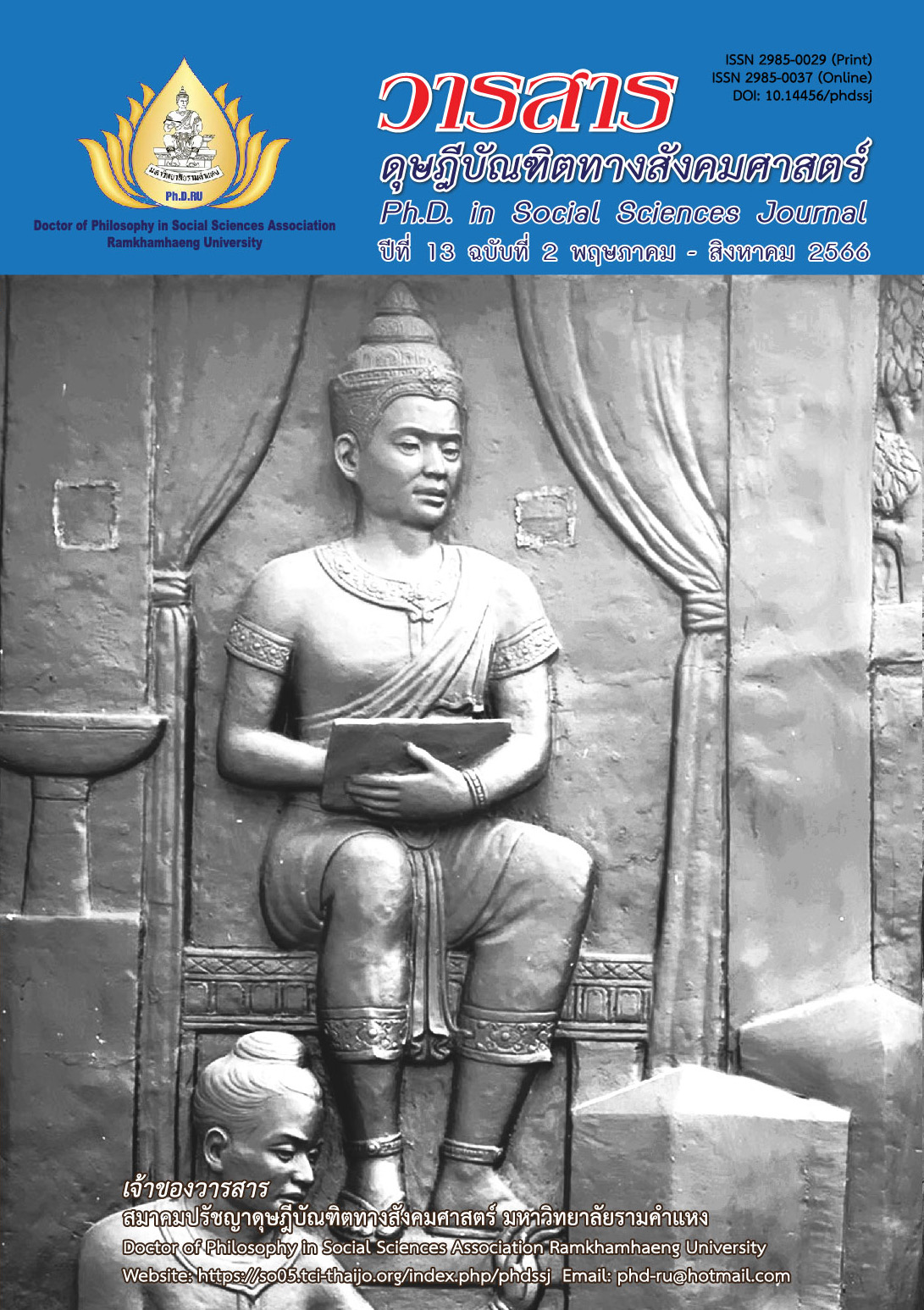ยาเสพติดกับเยาวชน: สภาพปัญหา ความเสี่ยง ทั้งนอกสถานศึกษาและในสถานศึกษาในพื้นที่ชายแดน อำเภอแม่สอด จังหวัดตาก
Main Article Content
บทคัดย่อ
บทความวิจัยนี้มีวัตถุประสงค์เพื่อศึกษาถึงสภาพปัญหาและความเสี่ยงของปัญหายาเสพติดกับเยาวชนทั้งนอกสถานศึกษาและในสถานศึกษาในพื้นที่ชายแดน อำเภอแม่สอด จังหวัดตาก ผู้วิจัยใช้วิธีวิจัยเชิงคุณภาพ โดยแบ่งออกเป็น (1) การทบทวนวรรณกรรมและงานวิจัยที่เกี่ยวข้อง (2) การวิจัยภาคสนามที่ใช้วิธีการสัมภาษณ์จากผู้ให้ข้อมูล 2 กลุ่ม ได้แก่ กลุ่มเจ้าหน้าที่ภาครัฐ และกลุ่มเจ้าหน้าที่สถานศึกษา ทั้งนี้ ผู้วิจัยใช้แนวคิดเกี่ยวกับกฎหมายและนโยบายที่เกี่ยวข้องกับยาเสพติดมาเป็นกรอบในการศึกษา
ผลการวิจัย พบว่า (1) บริบทของพื้นที่มีปัญหาเรื่องยาเสพติดปรากฏออกมาในลักษณะของเส้นทางการขนส่งจากพื้นที่ชายแดนเข้าสู่เมืองซึ่งพื้นที่อำเภอแม่สอดถือได้ว่าเป็นพื้นที่เฝ้าระวังในการตรวจสอบและจับกุม (2) ปัจจุบันภายนอกสถานศึกษาอาจจะพบเห็นเยาวชนในพื้นที่มีการเข้าถึงกัญชาและพืชกระท่อมมากขึ้น สำหรับในสถานศึกษาพบค่านิยมในการใช้บุหรี่ไฟฟ้า แต่ไม่มีการพบยาเสพติดจำพวกยาบ้า และ (3) สถานศึกษาได้ดำเนินงานด้านการสร้างภูมิคุ้มกันและป้องกันยาเสพติดแก่เยาวชนผ่านกิจกรรมและโครงการของสถานศึกษา ข้อเสนอแนะในงานวิจัย คือ การดูแลและการเฝ้าระวังเยาวชนในประเด็นเกี่ยวกับยาเสพติดจะต้องมีความทันสมัยทั้งด้านโยบายและมาตรการที่สอดรับกับพฤติกรรมของเยาวชนและมีบูรณาการในการแก้ไขปัญหาโดยมีทิศทางไปในทางเดียวกันบนฐานของการมีส่วนร่วมของภาครัฐและชุมชน
Article Details

อนุญาตภายใต้เงื่อนไข Creative Commons Attribution-NonCommercial-NoDerivatives 4.0 International License.
บทความวิชาการ บทความวิจัย และบทวิจารณ์หนังสือในวารสารดุษฎีบัณฑิตทางสังคมศาสตร์ เป็นความคิดเห็นของผู้เขียน มิใช่ของคณะผู้จัดทำ และมิใช่ความรับผิดชอบของสมาคมปรัชญาดุษฎีบัณฑิตทางสังคมศาสตร์ มหาวิทยาลัยรามคำแหง (กรณีการทำวิจัยในมนุษย์ ผู้วิจัยต้องผ่านการอบรมจริยธรรมการวิจัยในมนุษย์ และนำหลักฐานมาแสดง)
เอกสารอ้างอิง
Jongsukklai, K. (2012). Situation of drug problems, epidemic and impacts on children and youth in tourist areas: A case study of Pattaya City and Koh Larn, Bang Lamung district, Chonburi province. Chulalongkorn University, Social Research Institute. [In Thai]
Office of the Narcotics Control Board Tak Province. (2020). Minutes of the NCMC meeting, Tak province. Author. [In Thai]
Phitsanulok Hot News. (2015). Amphetamine in Phitsanulok province continues to spread severely. Narcotics Control Board Region 6 mobilizes prevention agencies for a period of 5 years. Retrieved from https://www.phitsanulokhotnews.com/2016/02/18/81525 [In Thai]
Poolsawat, M., Chantra, M., & Chairueang, N. (2012). Guideline the best practice prevent anti-drug in school: Case study Secondary school in Phatthalung province. Nakbutrparitat Journal, 4(2), 41-57. [In Thai]
Pounpunwong, W. (2020). The state, society and community: Risk situations of youth against drug problems in community areas in the municipalities of the lower northern region. Prince of Songkla University, Faculty of Medicine, Centre for Addiction Studies. [In Thai]
Pounpunwong, W. (2022). Educational institutions, policies and preventive pleasures against drug use among youth in the border areas: A case study of Mae Sod district, Tak province. Chulalongkorn University, Faculty of Medicine, Department of Psychiatry, Centre for Addiction Studies. [In Thai]
Puranapanya, N. (2015). Factors affecting drug-related offenses of children and youth in Buriram province. Master’s Independent Study of Public Administration (Criminology and Justice Administration), Rangsit University. [In Thai]
Wai-Umpa, M. (2018). Development of alternatives to prevent and solve drug problems. ONCB Journal, 34(2), 14-17. [In Thai]


